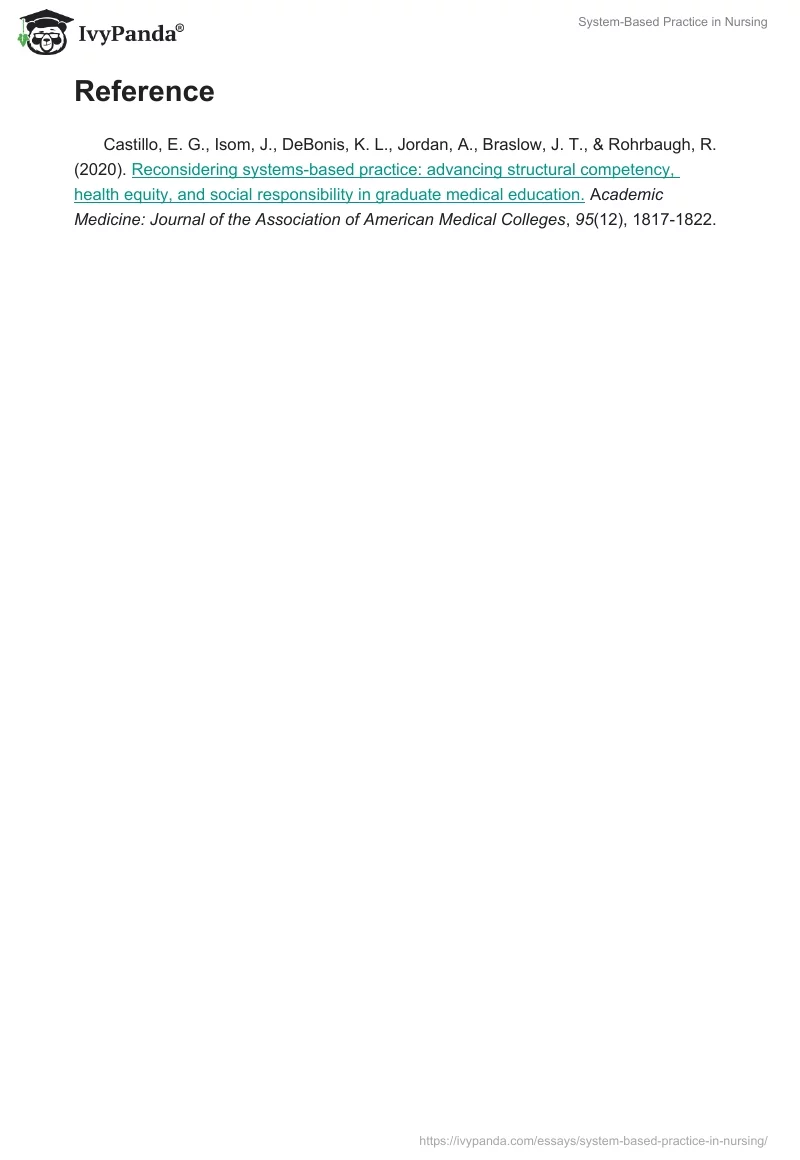System-based practice is an integral part of the nursing field that encourages leadership, responsibility, and empathy. Systems-based practice implies the healthcare worker’s knowledge of and attentiveness to the greater context and framework of the healthcare system, in addition to their capacity to efficiently utilize other system resources to deliver the best possible treatment. Thus, system-based practice principles must guide healthcare professionals; in this sense, they should involve interdisciplinary and cost-effectiveness principles.
First, when it comes to interdisciplinary principles, in my current workplace, I will have to collaborate with a team of professionals in order to provide high-quality care. This will involve working efficiently in a range of clinically relevant healthcare delivery environments and systems (Castillo et al., 2020). Such an approach can help resolve issues together rather than depending on a workaround. Moreover, to increase my leadership presence, I will manage care delivery throughout the entire spectrum of medical treatment and beyond, depending on the clinical specialty. At this point, I will assess which settings provide the best results for the patient.
As for the cost-effectiveness principles, here I will have to consider the financial aspect of healthcare. I will have to demonstrate concerns for cost, compensation, and effectiveness of the care that should be incorporated into patient treatment (Castillo et al., 2020). Within my work and responsibilities, I will include value-based concerns, cost awareness, supply and payment models, and risk-benefit analysis as necessary in patient care. This will help me provide comprehensive material for the patients.
Hence, healthcare workers must be guided by system-based practice principles, which should include multidisciplinary and cost-effectiveness considerations. In order to deliver high-quality care in my current job, I will first need to work with a team of specialists in accordance with the interdisciplinary concept. Regarding the principles of cost-effectiveness, I must take into account the financial side of healthcare. This will enable me to give the patients thorough information.
Reference
Castillo, E. G., Isom, J., DeBonis, K. L., Jordan, A., Braslow, J. T., & Rohrbaugh, R. (2020). Reconsidering systems-based practice: advancing structural competency, health equity, and social responsibility in graduate medical education. Academic Medicine: Journal of the Association of American Medical Colleges, 95(12), 1817-1822.



